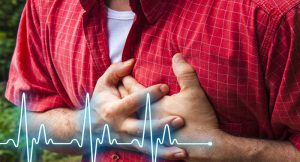
Rhythm Disorder: If you are experiencing symptoms such as heart palpitations, dizziness, fatigue, discomfort, anxiety, as well as negative situations such as vomiting or fainting, you may have a rhythm disturbance in your heart.
The part of the heart that provides its rhythmic beats without stopping is the energy plant called “sinus node” in the right atrium of the heart and composed of specialized cells. This power plant is like a very long-lasting battery. It generates electrical energy.
This energy spreads to the whole heart in certain ways, initiating and controlling first the electrical movement and then the mechanical movement, that is, the tightening and opening of the heart muscles. This center is the headquarters of the heart. The heart acts as a pump, providing blood circulation in the body. At rest, the heart rate in an adult is 50 / min. to 90 / min. should be between. It can go down to 40 / min while sleeping, as well as 130-140 / min while climbing the stairs fast, for example during effort. reach high values, such as
Heart rhythm is disturbed either by malfunctions in the center of management of the heart, or by interruptions in the transmission paths or excessive transmission paths, or because the cell population anywhere in the heart moves according to its own head without listening to the center. In this case, heartbeats may start to beat irregularly, may slow down (bradycardia) or beat too fast (tachycardia) Some diseases that involve the heart muscle, such as myocarditis, cardiomyopathy, may damage cells in the management center, or damage cells in another area may lose their normal functions and create irregular rhythms.
Tachycardia in hyperthyroidism and anemia (anemia), bradycardia and blocks in hypothyroidism are common rhythm disorders. In coronary insufficiency, bradycardia and blocks, uncontrolled tachycardia originating from the infarcts or ischemia regions in the heart muscle due to poor nutrition of the rhythm center are important and common rhythm disorders. On the other hand, some malfunctions in the transmission paths may be congenital. Tachycardias associated with these can be radically treated with RF catheter ablation after electrophysiological procedure. Severe bradycardia or blocks can be treated by inserting a pacemaker.
Rhythm disorders are very diverse, so their treatments vary widely and some are life-threatening. Therefore, making the correct diagnosis is very important in the treatment of the disease. Sometimes patients can take medication for many years unnecessarily, and sometimes they can be lost because they do not receive appropriate treatment. Arrhythmia patients should be evaluated very carefully, the root cause of arrhythmia should be identified, if any, and treatment should be planned accordingly.
In treatment, if there is an underlying cause, it should be eliminated. We use some drugs called antiarrhythmics in the treatment. Which drug will be used in which patient and how long the treatment will be continued is the specialty. Medications are usually suppression therapy. Their side effects are usually high, so they should be followed closely. Electrophysiological methods are more effective in the treatment of some rhythm disorders.
Electrophysiological study and RF catheter ablation in the treatment of arrhythmia generally saves the patient from chronic drug use. This treatment has no significant side effects. The treatment is completed in the electrophysiology laboratory and within 1-2 hours on average. The patient returns to his normal life the next day.
Pacemakers are generally used in the treatment of “bradyarrhythmias”, ie in cases of excessive slowing of heart rhythm or development of heart block. If bradyarrhythmias are not due to a temporary cause, they usually do not benefit from medication and a pacemaker must be inserted. Some tachyarrhythmias (such as ventricular tachycardia or ventricular fibrillation) do not respond to drug therapy. Some are also not possible for RF ablation.
These patients need to wear a cardiac defibrillator. These devices are similar to pacemakers, but they save lives by terminating the life-threatening rhythm and returning it to normal by giving shock energy.
The quality of the process is determined by a good equipment, well-trained electrophysiologist, who is well-trained in this area. Arrhythmia is one of the most complex issues in cardiology. The arithmologist should be very patient, very careful, and long-term.
What is Varicocele? Varicocele is the varicose veins that drain the blood in the testicles,…
What is Hemorrhoids ? It is a disease caused by the loosening of the veins…
What Is Monkeypox Virus? Symptoms and Ways of Transmission! The monkeypox virus, which has been…
What is Pelvic Venous Congestion Syndrome? (Failures Observed in Ovarian/Testicular Veins) What is Pelvic Venous…
What is Myoma ? Myoma, is a benign tumor arising from the uterine muscles. It…
What is Back Lift? Back stretching, excessive weight gain and aging may cause you to…